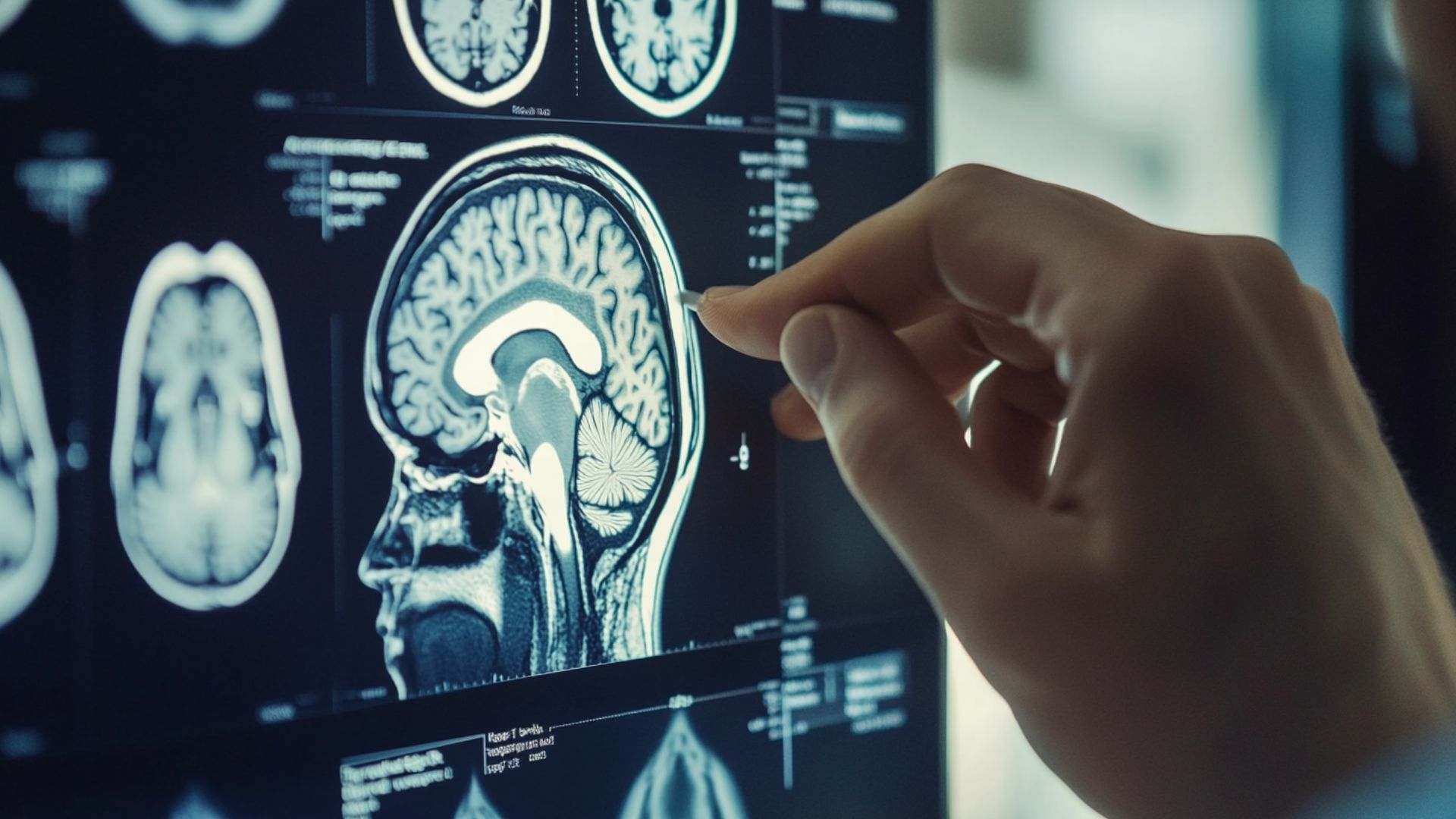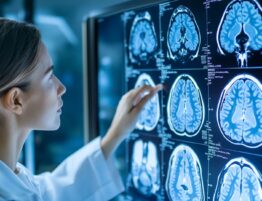Tremors affect millions of Americans, causing involuntary shaking that can significantly impact daily life. Whether it’s difficulty holding a coffee cup, trouble with handwriting, or challenges with eating, these rhythmic movements can be both frustrating and concerning. Understanding the distinction between essential tremor vs. Parkinson’s is crucial for getting the right diagnosis and treatment plan.
While both conditions involve shaking, they have different causes, patterns, and progression. A proper diagnosis opens the door to targeted therapies, effective management strategies, and a better quality of life. Let’s explore what sets these conditions apart and how modern medicine can help.
What Are Tremors and Why Do They Happen?
Tremors are involuntary, rhythmic muscle movements that cause shaking in various parts of the body — most commonly the hands, but also the head, voice, legs, or chin. They occur when the nerve signals that control muscle movement are disrupted. Understanding the difference between resting tremor vs. action tremor is essential for accurate diagnosis.
- Resting tremors occur when muscles are completely relaxed and typically improve during voluntary movement. These are most commonly associated with Parkinson’s disease. Imagine sitting quietly with your hands in your lap — if shaking occurs in this position but stops when you reach for something, that’s a resting tremor.
- Action tremors, on the other hand, happen during voluntary movement or when holding a position against gravity. Essential tremor falls into this category. If your hands shake while you’re writing, eating, or holding something steady, you’re likely experiencing an action tremor.
Recognizing these patterns helps neurologists determine which condition they’re treating and develop an appropriate treatment plan. The type of tremor influences everything from medication choices to lifestyle recommendations and long-term management strategies.
Essential Tremor: What You Need to Know
Essential tremor is one of the most common movement disorders, affecting an estimated 10 million Americans. When comparing Parkinsonian tremor vs. essential tremor, several key differences emerge. Essential tremor is a neurological condition that causes rhythmic shaking, typically in the hands, but it can also affect the head, voice, and occasionally the legs.
Unlike Parkinson’s disease, essential tremor doesn’t cause muscle rigidity or slow movement. It’s generally considered benign, meaning it doesn’t lead to other serious health problems, though its impact on daily functioning can be significant.
Common symptoms of essential tremor include:
- Shaking that worsens during purposeful movement (like writing or using utensils)
- Tremors that intensify with stress, anxiety, or fatigue
- Increased shaking after caffeine consumption
- Difficulty with fine motor tasks like buttoning clothes or typing
- Tremor that often affects both sides of the body symmetrically
- Voice tremor that creates a shaky, quavering sound when speaking
- Head tremor that appears as a “yes-yes” or “no-no” motion
- Gradual progression that typically worsens with age
Essential tremor often runs in families — about 50% of cases have a genetic component. It can begin at any age, but most commonly appears in people over 40. While the tremor may be mild at first, it can gradually worsen, making everyday tasks increasingly challenging.
The good news is that essential tremor treatment options are available and can significantly improve quality of life. Many people manage their symptoms effectively with the right combination of therapies.
Parkinsonian Tremor: The Hallmark Signs
Parkinson’s tremor symptoms differ significantly from those of essential tremor. Parkinson’s disease is a progressive neurological disorder that affects movement control due to the loss of dopamine-producing brain cells. The tremor is just one symptom of a broader condition.
The classic Parkinsonian tremor has several distinctive features:
- Pill-rolling motion: The thumb and fingers move as if rolling a small object between them
- Resting tremor: Most noticeable when the limb is relaxed and supported, not during movement
- Unilateral onset: Typically begins on one side of the body before progressing to both sides
- Slow frequency: Usually 4-6 beats per second, slower than essential tremor
- Improvement with movement: The tremor often decreases or stops during purposeful activity
Beyond the tremor itself, Parkinson’s tremor symptoms occur alongside other vital signs:
- Bradykinesia: Slowness of movement and difficulty initiating motion
- Rigidity: Muscle stiffness that resists passive movement
- Postural instability: Balance problems and increased fall risk
- Masked facial expression: Reduced facial animation
- Shuffling gait: Small steps and difficulty with walking
- Soft or monotone speech: Changes in voice quality and volume
- Micrographia: Handwriting that becomes progressively smaller
Understanding the full picture of Parkinsonian tremor vs. essential tremor helps patients and families know what to expect and how to prepare to manage the condition long-term.
Diagnosing Essential Tremor vs. Parkinson’s Disease
Accurate diagnosis requires a comprehensive neurological evaluation. Specialists look at multiple factors when distinguishing between essential tremor vs. Parkinson’s:
The diagnostic process includes:
- Medical history review: Doctors examine family history, age of onset, symptom progression, and medication use. Essential tremor often has a family history, while Parkinson’s typically doesn’t.
- Neurological examination: A thorough assessment of tremor characteristics, muscle tone, coordination, reflexes, and gait patterns helps identify the tremor type and associated symptoms.
- Observation of tremor patterns: The neurologist watches for tremors — during rest versus movement — and notes which body parts are affected. Understanding resting tremor vs. action tremor is critical here.
- Response to medication trial: Sometimes doctors prescribe medications to see how symptoms respond. Parkinson’s symptoms often improve with dopamine-replacement therapy, while essential tremor doesn’t respond to these medications.
- Brain imaging: DaTscan or other specialized imaging can detect changes in the dopamine system characteristic of Parkinson’s disease, though these tests aren’t always necessary.
- Self-tracking: Patients can help by keeping detailed notes about when tremors occur, what triggers them, and whether they worsen with stress, caffeine, or specific activities.
Early and accurate diagnosis is essential because it determines the entire treatment approach and helps patients plan for the future with appropriate expectations.
Treatment Options for Essential Tremor
While there’s no cure for essential tremor, numerous essential tremor treatment options can significantly reduce symptoms and improve daily functioning.
Medication approaches:
- Beta-blockers (propranolol): Often the first-line treatment, reducing tremor amplitude in about 50-60% of patients
- Anti-seizure medications (primidone): Effective when beta-blockers don’t work or can’t be tolerated
- Benzodiazepines: Occasionally used for stress-related tremor exacerbation
Therapy and lifestyle modifications:
- Occupational therapy: Teaches adaptive techniques and recommends assistive devices for daily tasks
- Physical therapy: Improves coordination, strength, and overall motor control
- Stress management: Meditation, yoga, and relaxation techniques reduce tremor intensity
- Caffeine reduction: Limiting coffee, tea, and energy drinks can decrease shakiness
- Adequate rest: Fatigue worsens tremors, so quality sleep is essential
Advanced interventions:
- Deep Brain Stimulation (DBS): A surgically implanted device that delivers electrical pulses to specific brain areas, reducing tremor by 80-90% in appropriate candidates
- Focused ultrasound (MRgFUS): A non-invasive procedure that uses sound waves to create a tiny lesion in the tremor-causing brain area
The best essential tremor treatment options often involve combining several approaches tailored to each person’s specific symptoms, lifestyle, and preferences.
Managing Parkinson’s Tremor: Modern Solutions
Parkinson’s tremor symptoms require comprehensive treatment that addresses both the tremor and other movement difficulties.
Primary treatment strategies:
- Dopamine replacement therapy: Levodopa/carbidopa (Sinemet) remains the gold standard, dramatically improving tremor and other motor symptoms in most patients.
- Movement-based therapies: Programs like LSVT BIG, boxing classes, and dance therapy help retrain motor circuits and improve movement amplitude while reducing tremor during activity.
Advanced medical interventions:
- Deep Brain Stimulation: Can reduce Parkinsonian tremor by 70-90% in medication-resistant cases
- Focused ultrasound: Offers a non-invasive option for tremor reduction
- Continuous drug delivery systems: Duodopa gel pumps or apomorphine infusions provide steady medication levels for smoother symptom control
Holistic support: Exercise, particularly aerobic activity and tai chi, has been shown to benefit Parkinson’s symptoms. Regular physical activity, adequate sleep, stress management, and nutritional support all play important roles in effectively managing Parkinson’s tremor symptoms.
Living Your Best Life With Tremors
Whether you have essential tremor or Parkinson’s disease, daily strategies can make a tremendous difference in maintaining independence and confidence.
Practical tips include:
- Using weighted utensils, large-grip pens, and adaptive tools
- Incorporating antioxidant-rich foods into your diet
- Staying physically active with at least 150 minutes of exercise weekly
- Practicing stress-reduction techniques like meditation
- Connecting with support groups for emotional encouragement
- Working closely with your neurologist to optimize treatment
At Lone Star Neurology, our team specializes in distinguishing essential tremor vs. Parkinson’s and creating personalized treatment plans that combine cutting-edge therapies with practical lifestyle coaching. We understand that living with tremors presents unique challenges, but with the right support and medical partnership, you can maintain control and independence.
Your tremor does not define you. With proper diagnosis, effective treatment, and comprehensive support, most people with tremor disorders live active, fulfilling lives for decades. Contact Lone Star Neurology today to start your journey toward better symptom control and improved quality of life.












Please, leave your review
Write a comment: